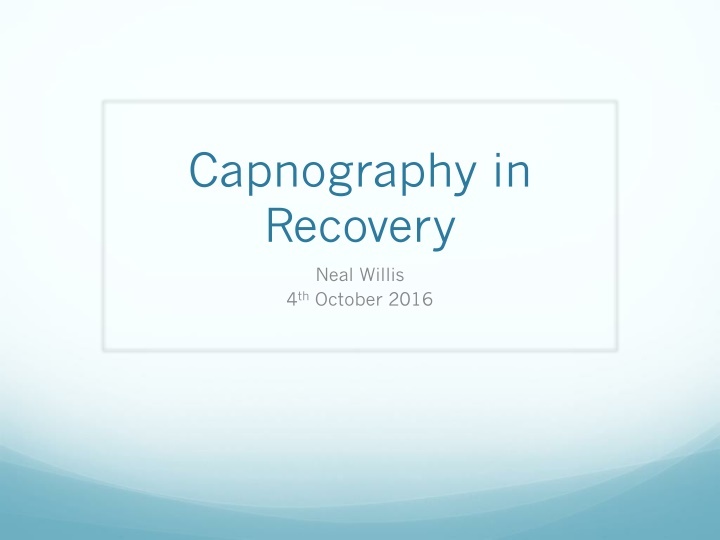
Capnography in Recovery
Explore the significance of capnography in recovery rooms, its role in monitoring airway management, and its recommendations in medical guidelines for enhanced patient safety and outcomes.
Download Presentation

Please find below an Image/Link to download the presentation.
The content on the website is provided AS IS for your information and personal use only. It may not be sold, licensed, or shared on other websites without obtaining consent from the author. If you encounter any issues during the download, it is possible that the publisher has removed the file from their server.
You are allowed to download the files provided on this website for personal or commercial use, subject to the condition that they are used lawfully. All files are the property of their respective owners.
The content on the website is provided AS IS for your information and personal use only. It may not be sold, licensed, or shared on other websites without obtaining consent from the author.
E N D
Presentation Transcript
Capnography in Recovery Neal Willis 4thOctober 2016
What is Capnography? Bedside monitor Gives a numerical value Also gives a WAVEFORM
Why are we talking about it? 2011: NAP 4 recommends routine use of capnography in all areas where airway management is occurring 2015: Updated AAGBI guidelines recommend routine use of capnography in recovery 2016: RHC Glasgow are going to implement these guidelines in theatre recovery
Why? Imagine a patient with an LMA obstructs their airway in recovery while you re writing down their observations They re post-op after having 17 baby teeth extracted
NAP 4 Case report
You said something about cardiac output? Think about where CO2 comes from Now imagine the heart stops OK? So, how is that relevant to the airway in recovery?
SAFE SAFE Approach Can you S See CO2? What is the A Appearance of the waveform? What is the F Frequency of the waveform? What is the E ETCO2 value?
Example Can you What is the What is the What is the S See CO2? A Appearance of the waveform? F Frequency of the waveform? E ETCO2 value?
Example Can you What is the What is the What is the S See CO2? A Appearance of the waveform? F Frequency of the waveform? E ETCO2 value?
Example 2 Can you What is the What is the What is the S See CO2? A Appearance of the waveform? F Frequency of the waveform? E ETCO2 value?
So What Next? Workbook Assessment Certificate (good for revalidation!) Hopefully annual recertification Bedhead signs at each bed space
The Long and Short Started on Monday 31st October 2016 All patients with an LMA or endotracheal tube will have CO2 monitored in theatre recovery until successful removal of the airway device New theatre documentation will lag behind by some way, but will include space to document CO2

